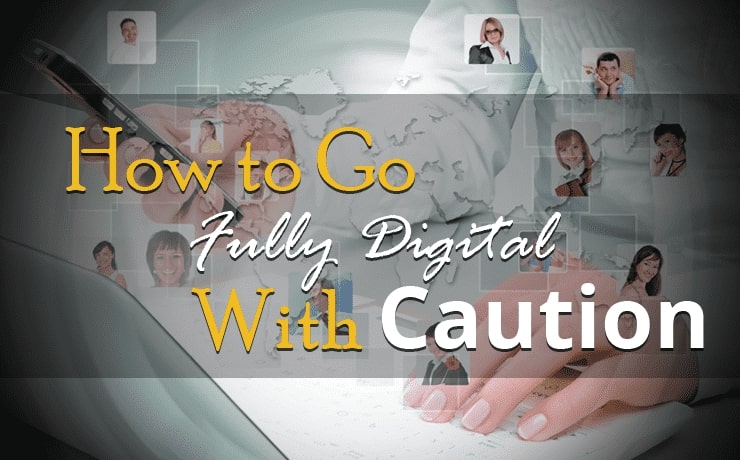How to Go Fully Digital With Caution
Elizabeth Reyn

The Internet is a wonderful asset in our society, facilitating our lives with a click of a mouse. It gets us places faster than we could have ever imagined (Google Earth, anyone?) and is our source for anything we ever wanted to find but previously couldn’t. The Internet is constantly being updated for our convenience so that we could experience everything digital from anyplace and anytime. Some companies have even decided to go fully digital, replacing their office space for remote connections, so working becomes easier and more accessible.
But it is important to remember that with great power comes great responsibility, so the saying goes. Imagine losing that power suddenly without prior notice. What if the Internet doesn’t run on WiFi in the cafe you went to for lunch, so now you can’t finish that presentation from Google Docs for the second half of the day (been there, done that…had to start over an hour before my group was due to present). Or even more drastic: what if you backed everything up on the Cloud, but someone hacked into your account and erased all of the data on all of your Apple devices. It would be your job to figure out how to restore everything, which can be the extra hassle that no one needs in their workday.
While SmartSites is an internet marketing company that handles business primarily online, we are careful to prepare for any possible setbacks and make sure that things are saved, updated, and backed up without problems. Here are some important precautions your business can take before deciding to go completely digital.
Have a Paper Trail
This method cannot be stressed enough. The worst case scenario would be a computer crashing and losing your life’s work or a computer hack that steals all of your files. Send each draft to a few different email addresses or to a friend’s email. Back everything up on a flash drive and keep it in a safe place. Store your files in multiple places, including one place you can easily access in case of a hack.
Do Frequent Backups
This method cannot be stressed enough. The worst case scenario would be a computer crashing and losing your life’s work or a computer hack that steals all of your files. Send each draft to a few different email addresses or to a friend’s email. Back everything up on a flash drive and keep it in a safe place. Store your files in multiple places, including one place you can easily access in case of a hack.
Watch Out For Your Credit Cards
Thanks to Smartphones, online payment has become easier and more convenient for everyday use. However, there are many dangers to storing your credit card information in cyberspace. If you decide to continue paperless billing, make sure that you are always in control of your finances. Check each statement before paying and report any statements that look questionable. While the credit card company may call you if they see anything that looks out of the ordinary, it is important to do these checks yourself as well.
Staying informed means staying safe. Take precautionary measures on the Internet and know what to do just in case of any unforeseen circumstances.
 Free
Consultation
Free
Consultation Free
Google Ads Audit
Free
Google Ads Audit







